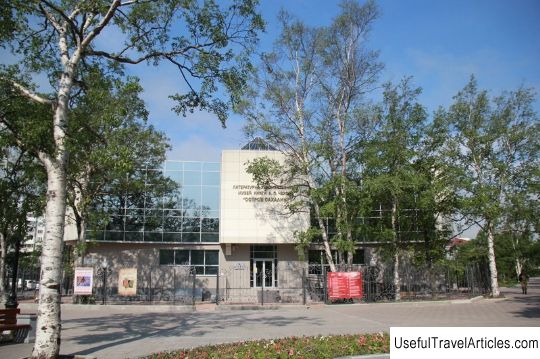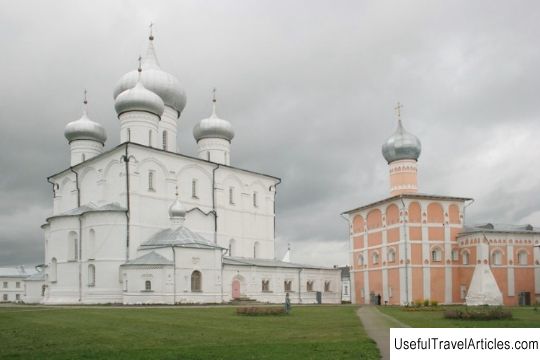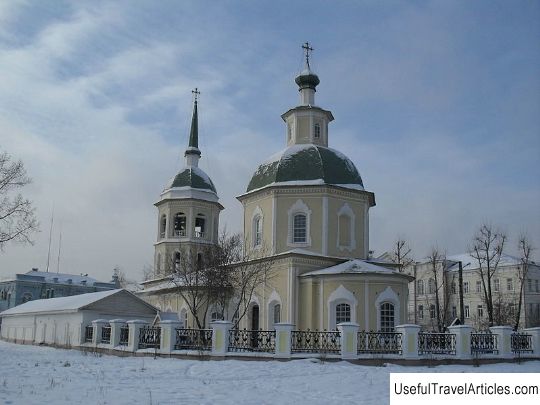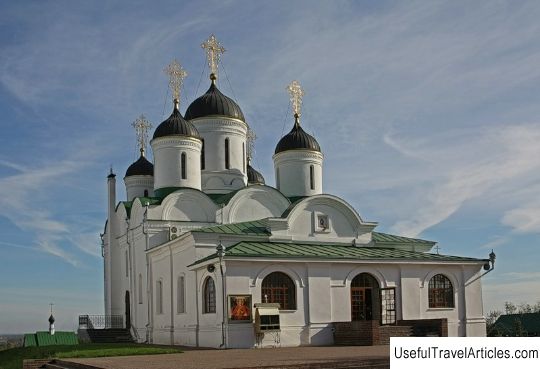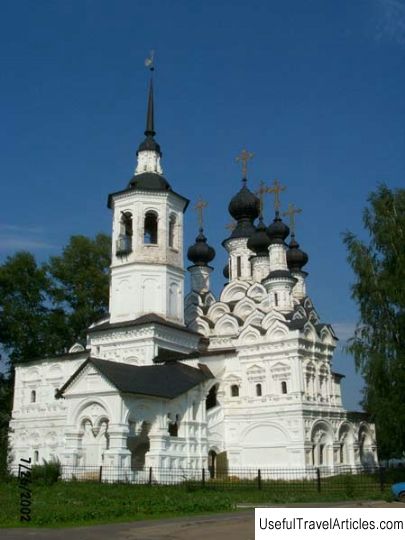Ensemble of the Transfiguration of the Savior and Sretensky-Transfiguration churches description and photos - Russia - North-West: Veliky Ustyug
Rating: 7,9/10 (1093 votes) 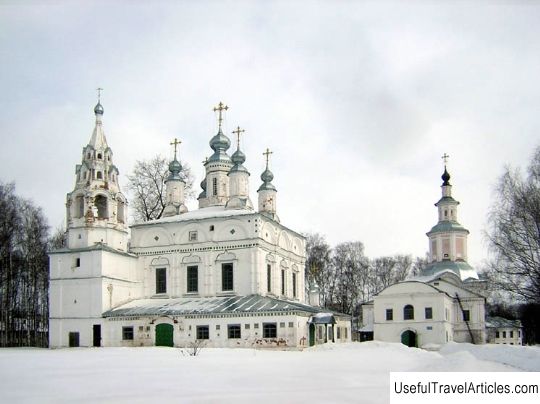
Ensemble of the Holy Transfiguration and Sretensky Transfiguration churches description and photos - Russia - North-West: Veliky Ustyug. Detailed information about the attraction. Description, photos and a map showing the nearest significant objects. Photo and descriptionThe Transfiguration Church is one of the best and wealthiest churches in the city of Ustyug. The Spaso-Preobrazhensky Monastery was founded by Abbess Anisya in 1422 as a nunnery and functioned in this capacity for 342 years. The time of the construction of the original church is unknown, but undoubtedly the fact that in 1422 the monastery was already with the existing church. According to the Scripture Book of 1679, both Transfiguration churches - wooden with a bell tower numbering 10 bells, were destroyed by fire, and one church was rebuilt at this place, again made of wood. And only in 1689 the construction of a church in the name of the Transfiguration of Jesus Christ from stone began, at the same time the bell tower was rebuilt. The stone Transfiguration Church was erected in 1696, and in 1697 the Veliky Ustyug and Totem Archbishop Alexander conducted the ceremony of consecration of the temple. The temple is decorated with an abundance of tiles, and local production. The vaults and walls of the Transfiguration Church were painted with picturesque images in 1756. The pre-altar iconostasis is carved and gilded. The iconostasis was erected in 1697, one year after the construction of the temple. The splendor of the ornamental decoration of the iconostasis amazes and enchants. Columns-columns, framed by bunches and leaves of grapes, attract the eye. The iconostasis of the cathedral has clearly defined horizontals and verticals, emphasized by the central axis. Icons and arches have a stepped arrangement. The image of the crucified Christ completes the construction. The image of the Transfiguration of the Lord, is the most ancient among the icons, also stands out for the richness of the decoration. Other icons belong to the 18th century, more precisely to its first half. The Sretensky-Transfiguration Church of the Transfiguration Monastery is considered warm or summer, in contrast to the Savior-Transfiguration Church, which, on the contrary, is reputed to be cold or, in another way , winter. The wooden church was destroyed by fire together with the Church of the Transfiguration of the Savior. In 1725, with the blessing of the Most Reverend Bogolep, Archbishop of Veliky Ustyug and Totem, another stone church was being built next to the Church of the Transfiguration of the Savior. Construction lasted for 14 years, the church was built only in 1739, and in August 1740 it was consecrated in the name of the Presentation of the Lord. The Church of the Presentation is the best and most integral example of religious local architecture of the second half of the 18th century. The building differs in particular originality from other temples of Ustyug, in view of the fact that in its upper tiers there is a ringing, which turns the temple into a church "under the bells". At the top of the key room, above the semi-closed vault, a passage is made to the octal openings, which form the belfry. Such an unsuccessful construction clearly indicates the lack of preparedness of local architects to solve such complex issues. The walls have been worked out like marble, and the complex itself is surrounded by a fence with stone pillars and two rather interesting entrance gates. Inside the temple there is a triangular altar, an elongated refectory. The exterior decoration is very restrained, but expressive, represented by wave-like pilasters, which are located in the corners and between the windows. A small two-tiered iconostasis, built in all likelihood at the end of the 18th or at the very beginning of the 19th century, it is present in the interior of the Sretenskaya Church. Despite its small size, its design is unusually pompous. In the wall of the refectory, on the north side, there is a passage to the side temple in the name of the Kazan Icon of the Mother of God. The refectory is fenced off from the church with an iconostasis. In it, the images that were written in the past century. Apart from the images installed in the iconostases, in various places of the temples there are almost 30 different icons, some of which are very ancient. The church library has about 130 copies of books of a moral, spiritual, liturgical nature. The last divine service took place in September 1928, and on November 12, they began to remove the bells from the bell tower of the Transfiguration Cathedral.        We also recommend reading Volcanology museum description and photos - Russia - Far East: Petropavlovsk-Kamchatsky Topic: Ensemble of the Transfiguration of the Savior and Sretensky-Transfiguration churches description and photos - Russia - North-West: Veliky Ustyug. |
